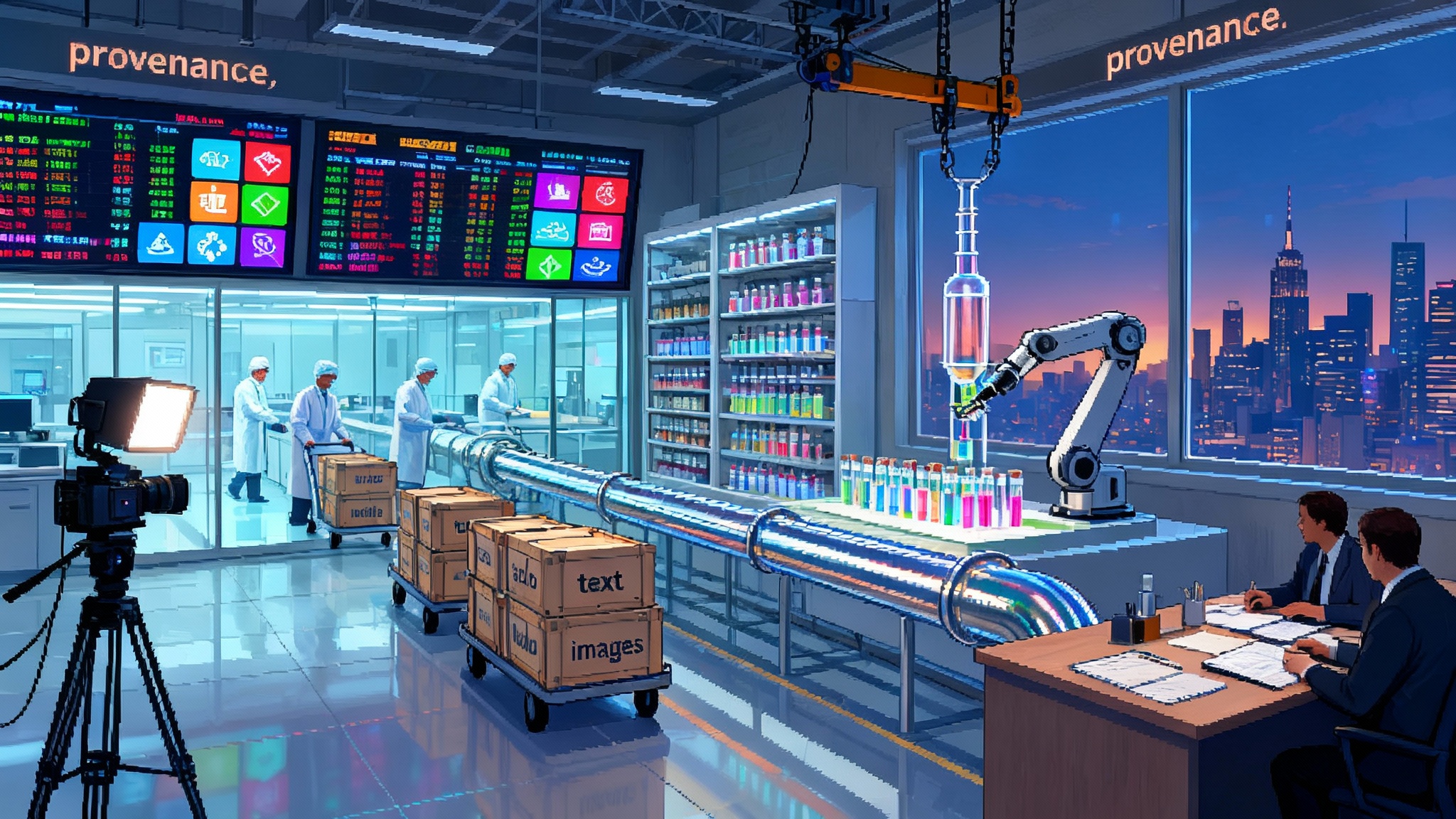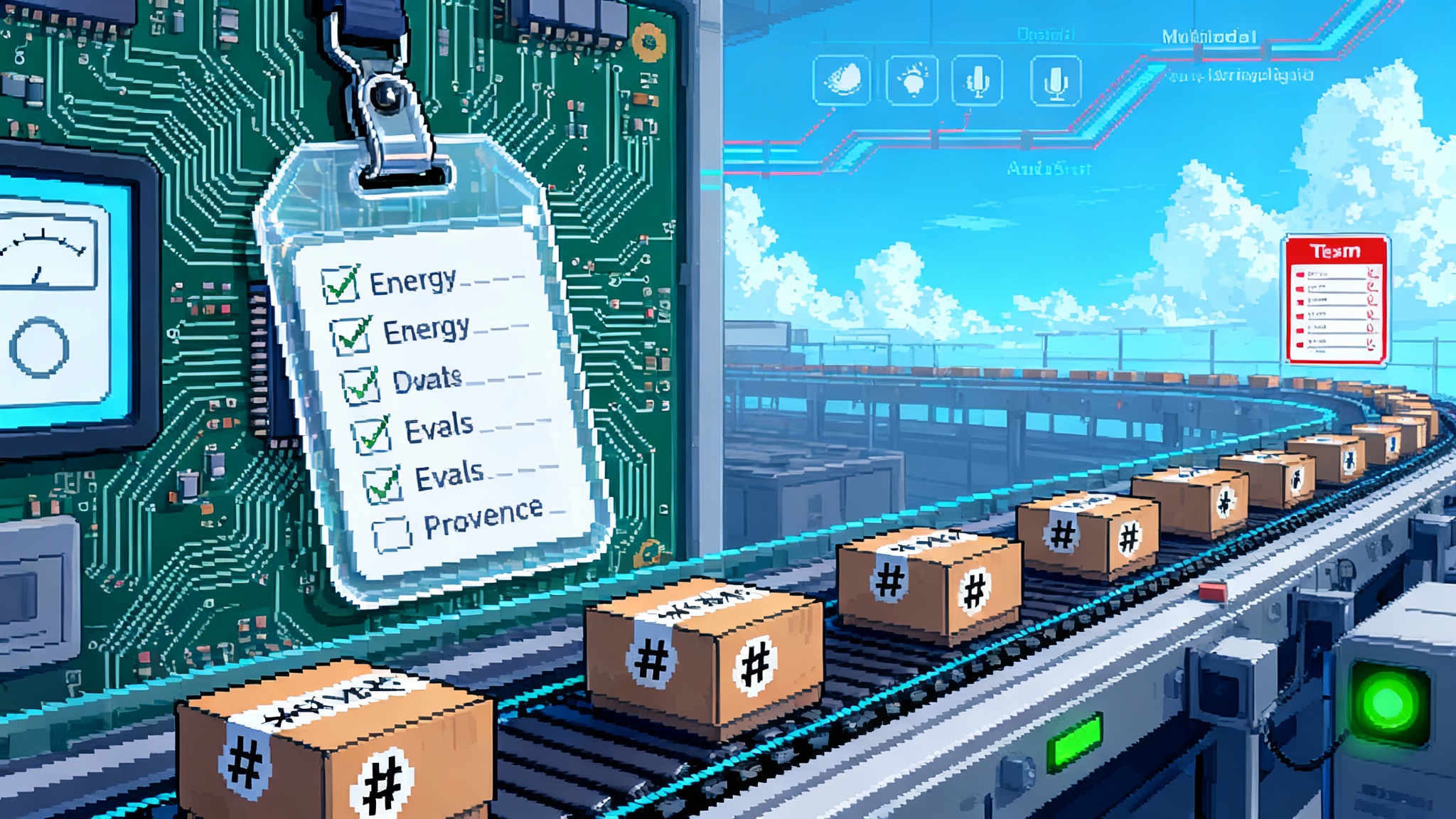The Newest Gen AI Startup Is Small, Local, and Useful
A quiet shift is underway. The newest wave of generative startups are not chatbots, they are compact task engines that run close to users and data. Here is how they work, why they matter, and what to watch next.

What just happened
A new kind of generative startup is stepping into the light. It is not a flashy chat app and it is not a research lab. It is a tidy bundle of models, tools, and guardrails that sits close to people and their data, and it finishes specific jobs to a documented standard. Think of it as a battery pack for workflows rather than a talking companion.
If you watch product launch feeds, you have seen the signs. Teams are shipping small models that run on laptops and phones. Enterprises are asking for data residency, traceable outputs, and predictable costs. Regulators are pushing for safety tests that can be explained in plain language. These forces have converged. The newest generative startups are practical instruments for work.
The story here is not about one brand, it is about a pattern. This piece explains that pattern in human terms. We will look at how this product class works, why it is launching now, the blunt tradeoffs, and how a builder could stand one up in a month.
Not another chatbot, a task engine
A chatbot is an open conversation that tries to be helpful about anything. A task engine is different. It has a narrow charter, a checklist of steps, and a definition of done. Where a chatbot is a generalist, a task engine is a specialist with a tool belt.
Picture a benefits case worker who must review a folder of documents, confirm eligibility rules, draft a notice, and log the decision. A task engine can:
- Pull text from scans, photos, and forms.
- Check rules against a policy library and the latest thresholds.
- Ask for a missing document in plain language.
- Write a draft notice with citations and a status code.
- Record every step for audit.
It does not try to be a life coach. It is a reliable colleague with a short list of talents.
Why this is happening now
Three shifts made this moment practical.
-
Local compute grew up. Phones, laptops, and edge boxes now ship with neural processors. Running a model on the device is no longer a party trick. Local inference reduces latency, cuts cost, and keeps sensitive data close to where it was created.
-
Small models got good at specific things. Open weight models have improved quickly. When paired with retrieval and tools, a compact model can rival a larger one on narrow tasks. The newest startups lean into this, right sizing models for the job rather than reaching for the largest available option.
-
Buyers want control. Legal teams now ask basic questions before any purchase. Where does data live, what is logged, how can we test it, who is on the hook if it goes wrong. A tight, local, auditable product answers these questions with less hand waving.
The result is a new default. Generative products are moving from chat windows to workflow lanes.
How the product actually works
Under the hood, these startups share a shape. You can understand it without jargon if you start at the edges and walk inward.
From data in to decision out
The task engine has four layers.
- Input layer, the senses
- Collects documents, emails, images, and structured fields.
- Normalizes them into a clean format. For a scan, that means optical character recognition. For a photo, that means segmentation and labels. For text, that means trimming boilerplate.
- Knowledge layer, the bookshelf
- Stores verified rules and references. This can be policy manuals, price lists, or historical tickets.
- Indexes them so a model can find the right page quickly. Retrieval is not magic. It is a polite librarian that brings you the right chapter when asked.
- Reasoning and tools, the workshop
- A compact language or vision model reads the inputs and pulls relevant pages from the bookshelf when needed.
- It uses tools for precision. Think of math functions for numbers, a calendar for dates, an address checker for locations, and a rule engine for eligibility logic.
- The model is steered to produce structured results, not freeform prose. It writes into a schema, like a filled out checklist.
- Output and logging, the paper trail
- Produces a draft decision, a score, or a next action prompt.
- Keeps an event log that shows the chain of steps. If someone needs to check the work, they can replay the sequence.
A day in the life, concrete examples
-
Claims triage. The engine ingests photos of a dented bumper, the repair estimate, and a police report. It extracts key facts, checks policy limits, flags missing photos, estimates severity using a vision model, and recommends a decision with a confidence score and reasons. The human adjuster stays in the loop and the output includes a trace for audit.
-
Supplier onboarding. It reads tax forms and certificates, validates names and addresses, checks sanctions lists, and drafts an approval note. If a certificate is expired, it requests a fresh copy with a friendly template that includes an upload link.
-
Field inspection. A technician points a phone at a broken pump. The on device model identifies the part, confirms a serial number, checks against the maintenance log, and suggests two possible fixes. The technician approves a part order with one tap. Photos and notes sync when the phone reconnects.
In each case, the user does not chat. They hand the engine a bundle of inputs. The engine returns a structured result, with the right level of context for a human to confirm and send.
What changed in the build system
The new startups are opinionated about how they build. A few choices stand out.
-
Structured outputs first. They design schemas early, like a contract that says exactly what an answer must contain. This lets a model fill slots rather than riff. It also makes testing straightforward.
-
Small model routing. They maintain a roster of models with different strengths. A tiny model handles document cleanup. A medium model composes a letter. A specialized vision model reads a meter. A router picks which model to use based on the task and a cost budget.
-
Tooling instead of prompts. Instead of stacking clever instructions, they expose real tools. A calculator beats a prompt that says do math carefully. A legal citation engine beats a prompt that says check your sources.
-
Built in evaluation. They ship with a test suite. The suite includes unit tests for tricky examples, scenario tests for end to end flows, and canaries that run every hour in production. When a model is swapped, the suite must pass before rollout.
-
Human in the loop by design. The default state is assistive, not autonomous. A person approves the final decision until the test suite and operational data say otherwise.
These choices are boring on purpose. They trade maximal creativity for reliability and speed.
The tradeoffs, stated plainly
Every design has costs. Here are the honest ones.
-
Capability versus privacy. Keeping data local reduces exposure, but you may give up the absolute strongest models. The fix is practical. Split the task so sensitive parts run on device, and non sensitive summarization can use a remote model.
-
Latency versus accuracy. Tool calls and retrieval add steps. Your response times are slower than a single model call, but the answers are traceable and more consistent. Cache intermediate results and pre compute when you can.
-
Cost versus coverage. Specialized models for vision, math, and language cost to host, even when idle. Avoid one heavy all purpose instance. Use many tiny workers that spin up on demand.
-
Guardrails versus flexibility. Structured output prevents odd mistakes, but it can feel rigid. Allow escape hatches. For example, include a free text note field that is clearly marked as an aside, not the decision itself.
-
Open weight versus vendor managed. Open weights give control and portability, but vendor managed models offload maintenance and risk. Choose per task. A good rule is to keep the core judgment local and offload peripheral tasks to managed services.
Naming these tradeoffs early keeps teams honest and helps buyers understand what they are getting.
How to build this in 30 days
Here is a straightforward plan a small team can follow.
Week 1, pick a job to be done
- Choose a repeatable task with a clear definition of done, real stakes, and enough data. Examples include invoice matching, photo based inspection, or compliance checks.
- Sit with five users and watch them work. Do not ask for features, ask what a better day looks like.
Week 2, assemble the spine
- Define a schema for the output. Treat it as a contract. For a claim decision, it might include decision code, reasons, missing items, and a draft message.
- Build a thin ingest pipeline. Accept a folder of files and a few fields. Normalize everything to a common format.
- Stand up a retrieval index using only verified texts. Keep a list of which sources are allowed.
Week 3, add the workshop
- Plug in a small general model for glue and a vision model if you need one. Wire up basic tools, calculator, calendar, lookup tables, and a rules engine.
- Write a handful of prompts that call tools deliberately and fill the schema. Keep them short.
- Create a minimal test suite with 30 real examples. Mark the expected outputs and acceptable ranges.
Week 4, close the loop and ship to five users
- Build a simple review screen that shows the proposal, reasons, and sources. Approve or edit, then send.
- Log every event. Store copies of inputs and outputs with timestamps and a run identifier.
- Set up shadow mode. For a week, run the engine in parallel with human work and compare results.
- Fix what breaks, then expand to 20 users.
Costs will be low if you route by task and run small models locally where possible. More important, you will learn fast because the product is structured enough to measure progress.
A human centered view, practical guardrails
People are not just the last click before send. They are the context keepers. The newest startups embed that idea.
-
Ask for consent and show your work. When the engine needs more data, it asks plainly and explains why. When it proposes a decision, it shows the pages it cited.
-
Provide a veto and a reason code. If a user rejects a proposal, the system captures the reason and turns it into a test case. Over time, the engine learns the organization’s taste and policies.
-
Keep a simple language setting. Users can switch tone and reading level. This is not about style points. It is about dignity, especially in regulated communications.
-
Make it calm. No blinking assistants. The best systems feel like a good spreadsheet. Clear labels, clear history, clear outputs.
This is how you get trust that lasts longer than a demo.
What it means for operators and policy teams
For operators, this class of product is a lever on throughput without a hard swap of systems. You can overlay the engine on existing tools and remove it without breaking the workflow. This lowers the adoption tax and keeps options open.
For risk and policy teams, the structure makes real governance possible.
- You can map which data is used, by which tool, for which output.
- You can run a documented test suite before any change.
- You can hold a vendor accountable because the system produces a paper trail.
This is where regulation and capability meet. A system that can be explained simply can be approved faster and scaled safely.
The near future, from chat to channels
Expect the interface to keep moving away from a text box. Channels will do the talking.
-
Email as a channel. The engine watches a shared mailbox and turns threads into tasks, then posts structured results back to the source system.
-
Camera as a channel. Photos and short clips become the primary input for field work, with instant guidance even without a network connection.
-
Files as a channel. Dropping a folder on the app is the normal way to start a job. The engine narrates progress with status messages, not paragraphs.
-
Dashboards as a channel. Managers see flow and quality trends across runs. They can drill down to any decision and replay it.
The point is not to chat. The point is to finish work with traceable steps and fewer handoffs.
What to build on top
Once a team has a reliable task engine, second order layers unlock.
-
A shared memory of solved cases. The system can suggest templates and edge case playbooks because it has seen them before.
-
Automatic staffing. Workloads can be balanced based on complexity and user skill, with the engine preparing the next best task for each person.
-
Customer transparency. For sensitive services, people can track the status of their case with clear reasons and timelines. This reduces calls and builds trust.
Each of these layers is a business in its own right. They all depend on the core being stable and testable.
Why this matters, beyond the hype
This is a turning point for generative tech because it collapses the gap between a clever demo and a dependable tool. It does so with a small footprint, clear economics, and human centered controls.
For builders, the message is simple. You do not need the largest model to create value. You need a problem that fits in a schema, a compact set of tools, and a system that shows its work.
For buyers, the ask is also simple. Demand structured outputs, a test suite, and clear logging. Ask to see a run replayed. If a vendor cannot show that, move on.
Clear takeaways
-
Start narrow. Pick a job with a clear definition of done and design the output schema first.
-
Keep it close. Run sensitive steps on device or within your network. Use small models where they shine.
-
Prefer tools over prompts. Wire real capabilities into the system so the model does less guessing.
-
Bake in tests and logs. Treat evaluation like unit tests. Log every event so you can explain and improve.
-
Put people in charge. Make consent, veto, and reason codes part of the workflow. Calm interfaces build trust.
What to watch next
-
Hardware standardization. As neural processors become common across devices, expect more on device skills and faster offline performance.
-
Industry specific models. Compact models tuned for insurance, logistics, and healthcare will reduce error rates and speed approvals.
-
Auditable autonomy. Teams will slowly move from assistive to partially autonomous on low risk steps, once tests and logs show consistent performance.
-
Contract based buying. Procurement will start to ask for schemas, test suites, and replay tools in the contract itself. Vendors that ship with these will win.
-
Team of tools, not a single assistant. The most capable products will feel like a tidy set of instruments that collaborate, rather than one voice that claims to do it all.
The newest generative startup is not a chatbot trying to be everything. It is a small, local, useful engine that finishes work, shows its work, and gets better because people can see inside and improve it. That is a breakthrough worth paying attention to.



